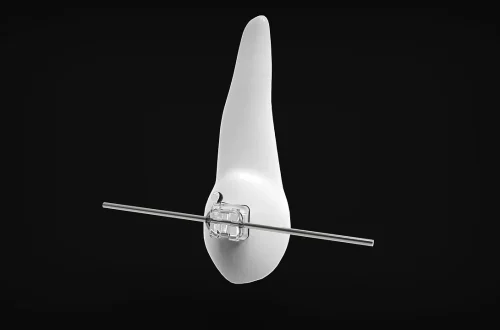
Choosing the Best Gymnastics Bar with Mat for Safe Training
Gymnastics is a sport that combines physical strength, flexibility, balance, and coordination. It’s a discipline that not only challenges the body but also the mind, fostering a sense of accomplishment and confidence in practitioners of all ages. For many, gymnastics begins at a young age, making it crucial to provide the right equipment for safe and effective training. One of the most essential pieces of equipment for budding gymnasts is the gymnastics bar, often complemented by a mat for added safety.
The right gymnastics bar serves as a foundational tool for developing skills, from basic swings to complex routines. It helps athletes enhance their grip strength, body control, and overall technique. However, selecting the best gymnastics bar can be a daunting task, especially with the myriad of options available on the market. Safety should always be the top priority when choosing gym equipment, as improper use or selection can lead to injuries.
In addition to the bar itself, incorporating a mat into training sessions is vital for minimizing impact and providing a secure landing area. This combination not only boosts confidence but also encourages gymnasts to push their limits while knowing they have a safe environment to practice in. Understanding the features and benefits of both gymnastics bars and mats can make a significant difference in training outcomes and overall enjoyment of the sport.
Understanding Different Types of Gymnastics Bars
When it comes to gymnastics bars, there are several types designed for different skill levels and training purposes. The most common types include horizontal bars, uneven bars, and training bars. Each serves a unique function and caters to various aspects of gymnastics training.
Horizontal bars, often used in men’s gymnastics, allow athletes to perform a range of skills, from swings to releases. These bars are typically mounted on vertical supports and are adjustable in height, which is perfect for athletes of different sizes. In contrast, uneven bars are primarily used by female gymnasts, consisting of two bars set at different heights. This configuration allows for a wider variety of skills, including transitions between the bars.
Training bars, also known as junior bars or practice bars, are designed specifically for beginners and younger gymnasts. They often have a lower height and a more stable base, making them an excellent choice for home practice. These bars can help young athletes build confidence and master basic skills before progressing to more advanced equipment.
Each type of bar has its own set of features that make it suitable for particular training goals. For instance, adjusting the height of a bar can help gymnasts practice skills in a controlled manner, gradually increasing difficulty as they improve. Additionally, some bars feature wider bases or added safety measures to prevent tipping, which is essential for ensuring a secure training environment.
When selecting a gymnastics bar, it’s essential to consider the gymnast’s age, skill level, and training goals. A beginner may benefit more from a training bar that offers stability and ease of use, while more experienced athletes might require a standard horizontal or uneven bar to hone their skills.
Safety Features to Look for in Gymnastics Bars
Safety is paramount when it comes to gym equipment, especially in a sport as dynamic as gymnastics. When choosing a gymnastics bar, there are several safety features to consider that can help minimize the risk of injury.
First and foremost, the stability of the bar is crucial. A well-designed gymnastics bar should have a sturdy base to prevent wobbling or tipping during use. Look for bars with a wider stance or additional support legs, as these can significantly enhance stability. Furthermore, some bars come with rubber feet or grips that provide added traction on various surfaces, reducing the likelihood of slipping.
Another vital aspect is the material of the bar itself. Most gymnastics bars are made from high-quality wood or metal, designed to withstand the weight and force exerted during training. Ensure that the bar you choose has a smooth finish to prevent splinters or cuts, as well as a grip that feels comfortable in the hands of the gymnast.
The height adjustment feature is also a key safety element. Bars that can be easily adjusted to different heights allow gymnasts to practice at a level that is appropriate for their skill set, reducing the risk of falls. Additionally, some bars are designed to lower closer to the ground, making it easier for beginners to practice without the fear of a high fall.
Finally, pairing a gymnastics bar with a high-quality mat is essential for ensuring a safe training environment. A mat can absorb impact and provide a cushioned landing, which is crucial for preventing injuries during practice. Look for mats that are thick enough to protect against falls and have a non-slip surface to keep them securely in place.
Choosing the Right Mat for Your Gymnastics Bar
Selecting the right mat to accompany your gymnastics bar is just as important as choosing the bar itself. A quality mat enhances safety and provides the necessary support for various skills and routines. There are several types of mats available, each designed for specific purposes.
Landing mats are the most common type used in conjunction with gymnastics bars. These mats are typically thicker and provide excellent shock absorption, making them ideal for practicing dismounts or falls. Look for mats that are at least 2-4 inches thick, as they can significantly reduce the impact on joints and prevent injuries.
Folding mats are another popular option, especially for home use. These mats are versatile and can be easily stored when not in use. They are often made from soft foam and can be used for a variety of training activities, including floor exercises and stretching. Ensure that the folding mat has a non-slip surface to keep it secure during use.
Another consideration when choosing a mat is its size. The mat should be large enough to cover the landing area beneath the gymnastics bar, providing ample space for gymnasts to practice safely. A mat that is too small can lead to dangerous falls or injuries, so it’s essential to measure the area and select a mat that fits appropriately.
Lastly, consider the mat’s durability. High-quality mats are designed to withstand the wear and tear of regular use, making them a worthwhile investment. Look for mats made from durable materials that can be cleaned easily, as hygiene is crucial in any training environment.
In summary, the right gymnastics mat not only enhances safety but also supports effective training. By understanding the different types of mats available and their specific uses, you can make an informed decision that complements your gymnastics bar and training goals.
Cost Considerations When Buying Gymnastics Equipment
Investing in gymnastics equipment can range from affordable to quite expensive, depending on the quality and type of gear you choose. Understanding the cost considerations is essential for making a smart purchase that fits within your budget while still meeting safety and training standards.
First, assess your training needs and the gymnast’s skill level. For beginners, a training bar and a basic mat may suffice and can be found at a lower price point. As skills progress, investing in higher-quality equipment becomes essential for safety and performance. For more advanced gymnasts, a professional-grade bar and landing mat may be necessary, which can significantly increase the overall cost.
Additionally, consider the brand and materials used in the equipment. Reputable brands that specialize in gymnastics equipment often provide higher-quality products that are safer and more durable. While they may come with a higher price tag, the investment is often justified by the added safety features and longevity of the equipment.
Another factor to keep in mind is whether you are purchasing new or used equipment. While used equipment can be more budget-friendly, it’s crucial to thoroughly inspect it for any signs of wear and tear or safety issues. If opting for used equipment, ensure that it meets the necessary safety standards and is still in good condition.
Finally, don’t forget to account for additional costs such as shipping or assembly, as these can add up quickly. Some suppliers offer free shipping or assembly services, which can be a valuable consideration when comparing prices.
In conclusion, while the initial investment in gymnastics equipment may seem significant, prioritizing safety and quality can lead to better training outcomes and longer-lasting gear. By understanding the various cost factors, you can make informed decisions that support both your budget and training goals.
—
**Disclaimer:** This article is for informational purposes only and does not constitute medical advice. Always consult with a healthcare professional for any health-related concerns or questions.




